order
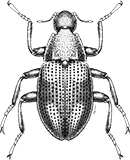
Coleoptera
“Adult Beetles”

Coleoptera
“Larval Beetles”

Diptera
“True Flies”

Ephemeroptera
“Mayflies”

Hemiptera
“True Bugs”

Lepidoptera
“Aquatic Caterpillars, Snout Moths”

Megaloptera
“Alderflies, Dobsonflies, and Fishflies”
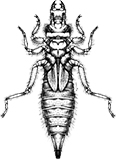
Odonata
“Dragonflies and Damselflies”

Plecoptera
“Stoneflies”

Trichoptera
“Caddisflies”
family
Belostomatidae
genus
Belostoma
“Giant Water Bugs”
Genus Overview
8 species in North America. This group is commonly called giant water bugs. Mostly found in slow, pool areas of streams to rivers, lakes and ponds.
Characteristics
POLLUTION TOLERANCE
Southeast: 9.8 and higher
0 = least tolerant, 10 = most tolerant
FEEDING HABITS
Piercer / Predator
MOVEMENT
Climber
Swimmer
Swimmer
DISTRIBUTION
Widespread (east of the Rocky Mtns.)
HABITAT
Lentic-littoral
Lotic-depositional
Lotic-depositional
Diagnostic Characters
order
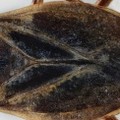
Hemelytra
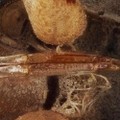
Needle-like Beak
family
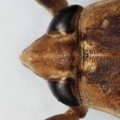
Antennae Shorter than Head
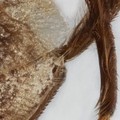
Flat Air Straps on Abdominal Apex
+ Expanded Character List
Order:
Adults: With or without wings. If wings present, forewings typically leathery or hard basally and translucent and flexible apically. Nymphs: With or without wing pads. Segmented legs present. Mandibles hidden within needle-like beak in adults and nymphs.
Family:
Depressed (flattened dorsoventrally), with elongate-oval shape in dorsal view. Eyes bulging from sides of head. Antennae shorter than head, usually hidden beneath eyes. Beak cylindrical and 3-segmented. Front legs raptorial, with tibiae and femora fitting tightly together to grasp prey. All legs flattened and equipped for swimming, mostly in short bursts. Pair of flat, retractile air straps in posterior end of abdomen for occasional respiration at water surface.
Genus:
Antennae short, apex of abdomen with pair of air straps, mature adult length less than 37mm, membrane of hemelytra not reduced
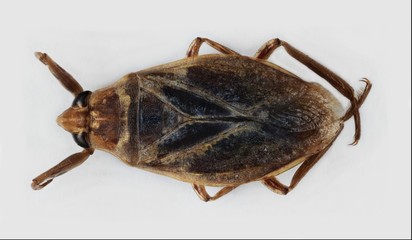
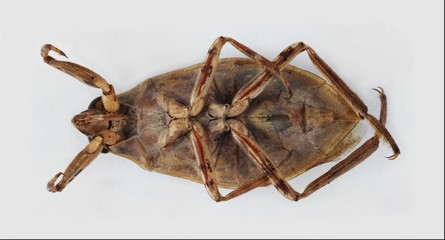
Dorsal
Ventral



